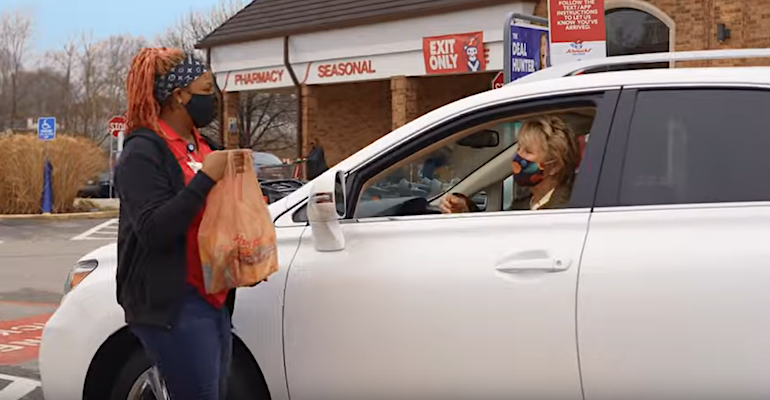For traditional grocers, it’s the long-term online grocery customers — not the new digital shoppers — who bring in the lion’s share of e-commerce dollars, an analysis by Brick Meets Click finds.
Established online grocery users generated more than 3.5 times the revenue for supermarkets than new online customers did during over the previous four weeks, according to the Brick Meets Click eGrocery Performance Benchmarking 2021 Wave. The findings reflect online transactional data linked to nonpersonal identified households across 876 conventional grocery stores from 45 U.S. retail banners, covering the 12 weeks ended Sept. 28, 2021.
Barrington, Ill.-based advisory firm Brick Meets Click noted that longer customer relationships pay off in the online realm. Established customers — those who have shopped online with a grocer for over 60 weeks — spent 2.4 times more than new customers who began shopping the same grocer within the past four weeks.

Similarly, the analysis revealed that regular online grocery users order more often and generate bigger baskets. Over the period examined, established customers’ order frequency was 1.9 times higher than for new customers, and their average order values were 1.3 times greater.
“Grocers need to build more meaningful engagement with their online customers,” explained David Bishop, partner at Brick Meets Click, which focuses on how digital technology impacts food sales and marketing. “The market has contracted as expected, but the fact that nearly three-quarters of the customers that shopped online last year have lapsed and nearly two-thirds of the customers today are considered new to the grocer’s service simply underscores that those attracted to shopping this way are still in search of a service they deem acceptable compared to the alternatives.”
The 2021 eGrocery benchmarking study, sponsored by Cardlytics, Mercatus and Hussmann, also found that most supermarket customers have strong preferences in receiving their online orders. When given the option, fewer than 5% used both pickup and delivery services from the same store banner over the entire 12-week period in 2021. That means if a grocer only offers just one receiving method, it could be sending the 54% of shoppers who prefer delivery and 42% who prefer pickup to a competitor, Brick Meets Click pointed out.
Over the four weeks ended Sept. 28, 2021, 34% of online customers used their supermarket’s service for 60 weeks or longer, accounting for 46% of overall online sales. In comparison, the 23% of customers who placed their first order with the grocer in that time frame represented only 13% of sales.
“Consumers’ brand and channel preference has been more difficult than ever to predict as a result of the pandemic,” according to Mike Novosel, head of grocery at Cardlytics, an Atlanta-based digital advertising platform. “We focus on helping brands understand whole wallet behavior through our access to $3.5 trillion of annual consumer spend data and work with them to identify who is not as loyal as suspected, or most inclined to engage with them digitally, then reach them through their bank, where spending is top of mind, to incent behavioral change.”





